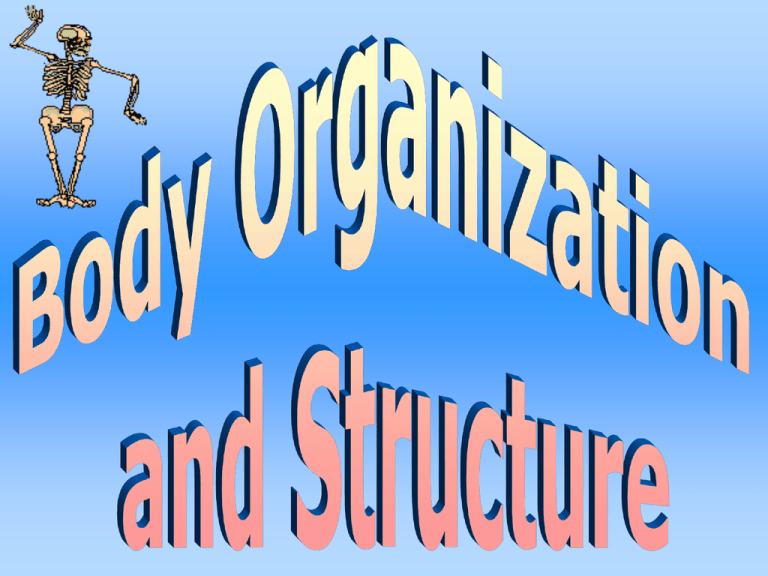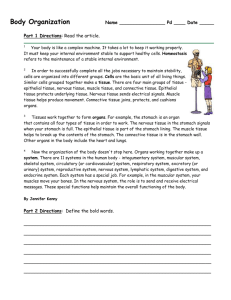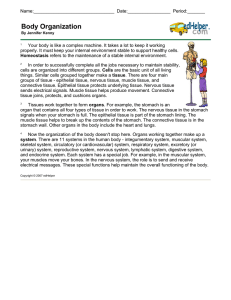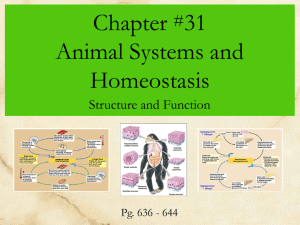Body Organization - Junction Hill C
advertisement

How does a person stay alive even though the environment around him or her is so cold? • The answer: – Your body did not allow its internal conditions to change enough to stop the cells from working properly. – The maintenance of a stable internal environment is called homeostasis – Homeostasis is not an easy task. – Your body must perform many different “jobs” to maintain homeostasis – Cells are organized into different “teams” to perform these jobs. – Each cell in your body has a specific job in maintaining homeostasis. • A group of similar cells working together forms a tissue. • Your body contains four main types of tissue • Epithelial tissue • Connective tissue • Muscle tissue • Nervous tissue • Covers and protects underlying issue. • When you look at the surface of your skin, you see epithelial tissue. • The cells stick tightly and form a continuous sheet. • Sends electrical signals through the body • It is found in the brain, nerves, and sense organs • Is made of cells that can contract and relax to produce movement. • Joins, supports, protects, insulates, nourishes, and cushions organs. • It also keeps organs from falling apart • Two or more tissues working together from an organ. • One type of tissue alone cannot do all the things that several types working together can do. The stomach is an organ • The four types of tissue work together so that the stomach can carry out digestion – Nervous tissue in the stomach partly controls the production of acids that aid in the digestion of food. Nervous tissue signals when the stomach is full. – Epithelial tissue lines the stomach. – Layers of muscle tissue break up stomach contents – Blood and a connective tissue called collagen are found in the wall of the stomach. Organs Form Systems • Your stomach does much to help you digest your food, but it doesn’t do it all. • It works together with other organs, such as the small intestine and large intestine, to digest your food. • Integumentary system – Skin, hair, and nails protect underlying tissue • Muscular system – Skeletal muscles move your bones • Skeletal system – Bones provide a frame to support and protect body parts • Cardiovascular system – Heart pumps blood through all your blood vessels • Respiratory system – Lungs absorb oxygen and release carbon dioxide • Urinary system – Removes wastes from the blood and regulates the body’s fluids • Reproductive system (male) – Produces and delivers sperm • Reproductive system (female) – Produces eggs and nourishes and shelters the unborn baby • Nervous system – Receives and sends electrical messages throughout the body • Lymphatic system – Returns leaked fluids to blood vessels. It also helps you get rid of germs that can ham you • Digestive system – Breaks down the food you eat into nutrients that can be absorbed into your body. • Endocrine system – Glands regulate body functions by sending out chemical messengers. The ovaries, in females, and testes, in males, are part of this system








